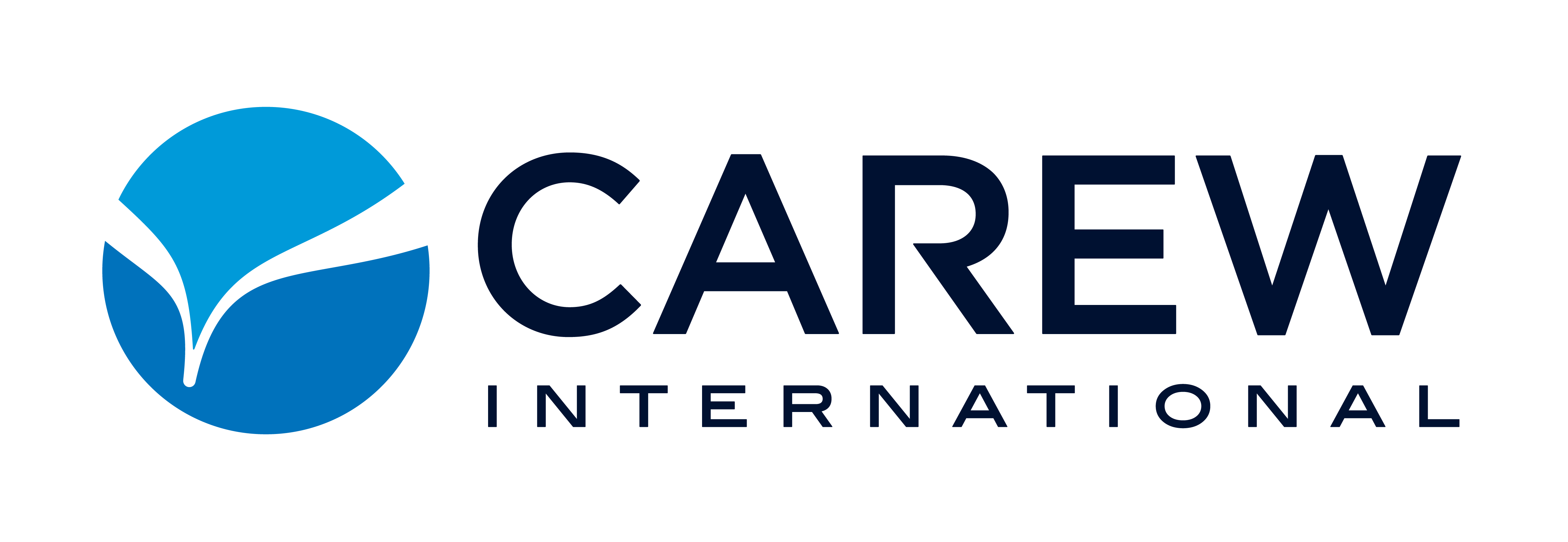Ask any top-performing sales pro what really moves the needle, and you’ll probably hear the same thing: strong customer relationships.
Not the surface-level, “How was your weekend?” kind. We’re talking about real trust. The kind that leads to customer loyalty, longer contracts, and fewer pricing conversations.
At Carew, we believe that building long-term customer relationships in sales isn’t about charm or personality. It’s about clarity, curiosity, and a framework that keeps you grounded.
That’s where the JADIK Matrix comes in.
If you’ve been through our Dimensions of Professional Selling® (DPS) program, you already know how central this tool is. If not? You’re about to discover a mindset shift that changes how you see your customer relationships and how far they can go.
What is the JADIK Matrix?
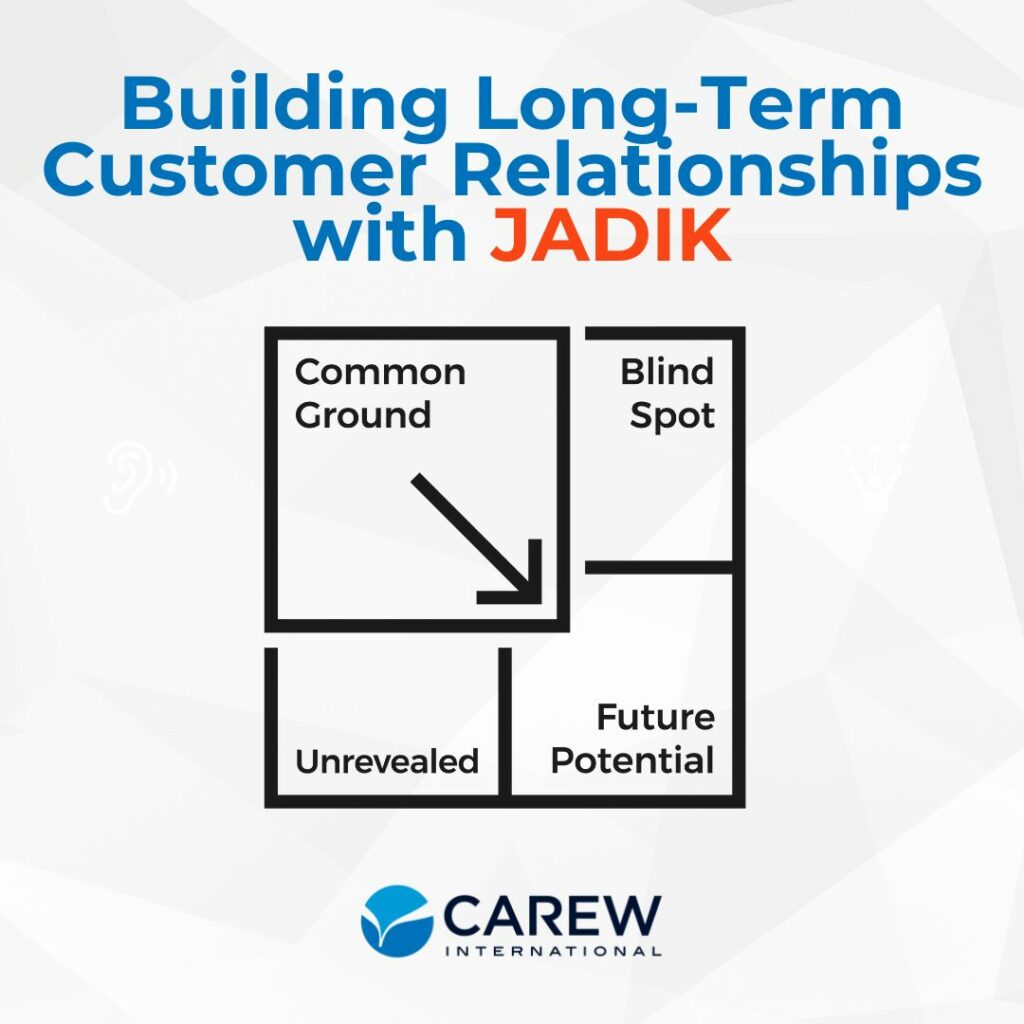
It’s a simple visual that maps out your relationship with a customer based on what you know, what they know, and what neither of you has said out loud yet. It’s a framework to turn new customers into loyal customers and a guide for building relationships.
When utilized correctly and consistently, you’ll see higher customer satisfaction, a sales team that meets customers’ needs with ease, and increased customer retention.
The JADIK Matrix has four regions:
- Common Ground
- Blind Spot
- Unrevealed
- Future Potential
Each region tells a different story. And when you learn to read it, you’ll stop guessing where you stand and start guiding relationships to a stronger, stickier place with real emotional connection and a better customer experience.
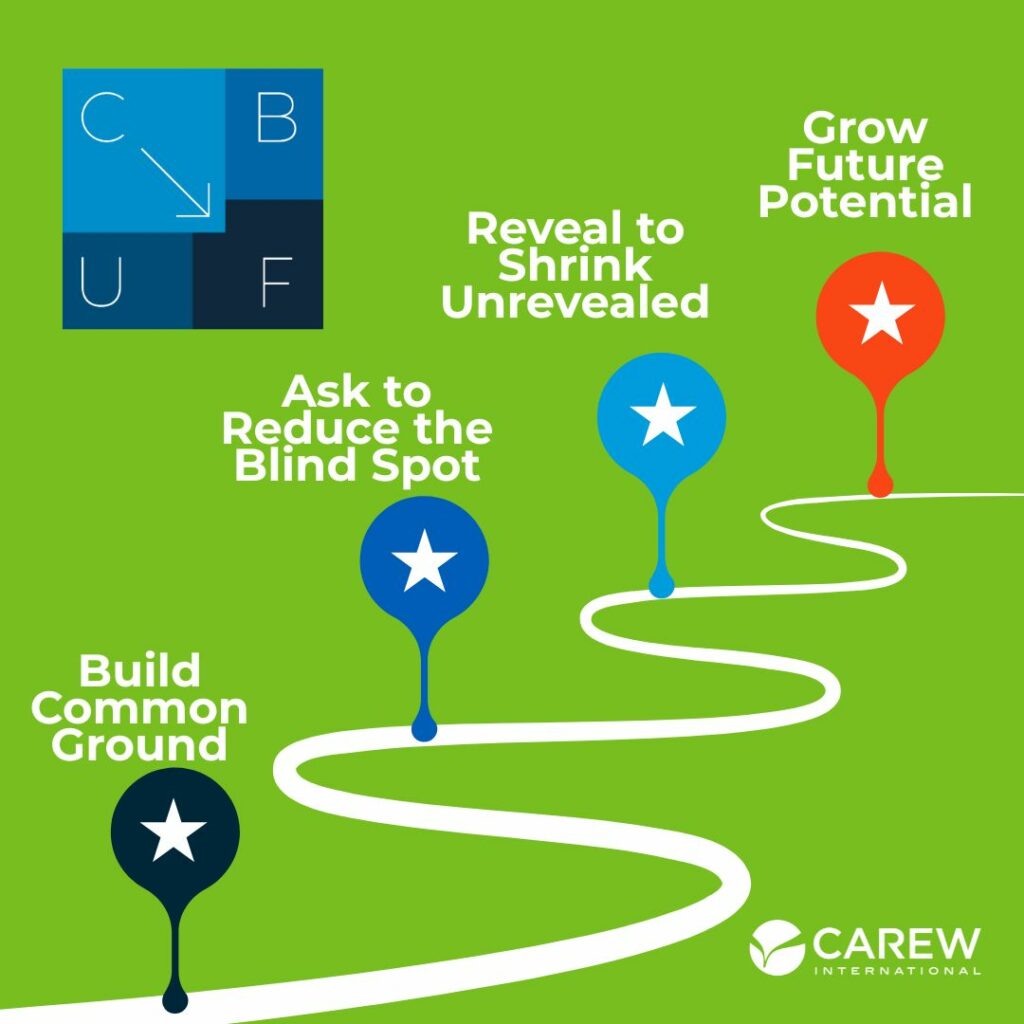
COMMON GROUND: Meet Them Where They Are
This is the overlap – what both parties know and have acknowledged. Early on, and with a potential customer, Common Ground is light: names, job titles, maybe a quick LinkedIn or social media scan. But the more you share and learn, the deeper that overlap becomes.
Think:
- Shared priorities
- Clear next steps
- Aligned definitions of success
- A personal connection to the client
This is your launchpad. Without it, the relationship goes nowhere.
What to do: Before that first call, use every tool at your disposal – social media, internal insights, recent press – to build context. That way, your first few questions don’t waste time. You’re already speaking their language and are on the way to building a strong connection. Going the extra mile to research your customer allows you to start building trust from the very beginning.
Real-world example: A Carew-trained rep recently shared how she broke into a notoriously tough account by finding a small piece of Common Ground – an article the VP of Sales had published on LinkedIn. She referenced it on the first call. It turned an initial outreach into a warm, productive conversation. The deal closed six weeks later.
BLIND SPOT: The Danger Zone
This is the part of the relationship where your customer knows something you don’t, and that gap is killing your momentum.
Maybe they’re frustrated with their current vendor but haven’t told you why. Maybe there’s an internal champion you haven’t met. Or maybe they have doubts about your pricing but haven’t voiced them.
Here’s the trap: Most sales reps don’t even know the Blind Spot exists. They assume everything’s on the table. That’s risky.
The JADIK Matrix reminds us to go in with humility. To ask before we pitch. To explore before we advise. That’s how the best sellers avoid blind spots and why our Exploratory Process is a critical skill in every conversation.
One of the most effective strategies to utilize in the exploratory process is LAER: The Bonding Process®.
Ask yourself: Am I making decisions based on assumptions, or facts I’ve earned through real conversations?
Real-world example: One rep we coached realized – weeks into the buying process – that the customer had a procurement requirement tied to sustainability practices. It was buried in an RFP appendix. No one had brought it up. It was a massive Blind Spot that almost cost the deal. A single question – “Is there anything we haven’t discussed that could influence your final decision?” – surfaced the issue just in time.
UNREVEALED: What You’re Sitting On
This one’s on you. The Unrevealed region includes anything you know that your customer doesn’t – but should.
This could be a unique feature. A success story that mirrors their exact challenge. A capability they haven’t realized they need yet.
If you don’t bring that insight to the table, it’s not helping anyone. And here’s the catch: if you jump into solution-mode too fast, they won’t be open to hearing it.
That’s why we teach a structured, high-impact presentation process, so you’re not just info-dumping, but delivering value in a way that lands.
Pro tip: Reveal your solutions after you’ve earned trust and context and have been through a full exploratory process with lots of open-ended questions. That’s when they stick.
Example in action: A sales engineer was preparing to present a platform upgrade to a long-time client. Rather than leading with the specs, she started by reviewing recent support tickets and aligned the presentation to those challenges. The upgrade wasn’t just new, it was necessary. She shrunk the Unrevealed quadrant by tying product knowledge directly to the customer’s experience and providing valuable insights.
FUTURE POTENTIAL: Where the Magic Happens
This quadrant represents what’s possible. A stronger partnership. Bigger deals. Long-term loyalty.
But here’s the thing: Future Potential doesn’t show up on its own. It grows only when the other three regions are managed well. The more you expand Common Ground and reduce the Blind Spot and Unrevealed, the more Future Potential you unlock.
And just like relationships, the Matrix moves. It’s dynamic. Every conversation, every new insight, every moment of trust reshapes the Matrix. That’s why this isn’t a one-and-done tool. It’s a guide you return to again and again. And when you tune into it, it gives you a strong competitive advantage.
Strong Relationships are Cultivated, not Scripted
Like anything worth growing, customer relationships require intention, attention, and the right conditions. The JADIK Matrix gives you the tools to nurture the soil, remove the weeds, and create space for something lasting.
It’s not about “tactics.” It’s about consistently showing up with curiosity, empathy, effective communication and relevance.
Applying the JADIK Matrix to Sales Strategy
The JADIK Matrix is designed to empower sales professionals in several key areas:
- Assessing Sales Style: Understanding personal sales style and how it aligns with customer expectations.
- Balancing Communication: Achieving the right mix of listening and presenting to foster a two-way dialogue.
- Optimizing Sales Approach: Tailoring strategies to meet specific customer needs and scenarios.
- Accelerating Relationship Development: Moving swiftly and effectively to deepen customer engagement.
Want to go deeper? Match your Approach to their Buyer or Customer Orientation.
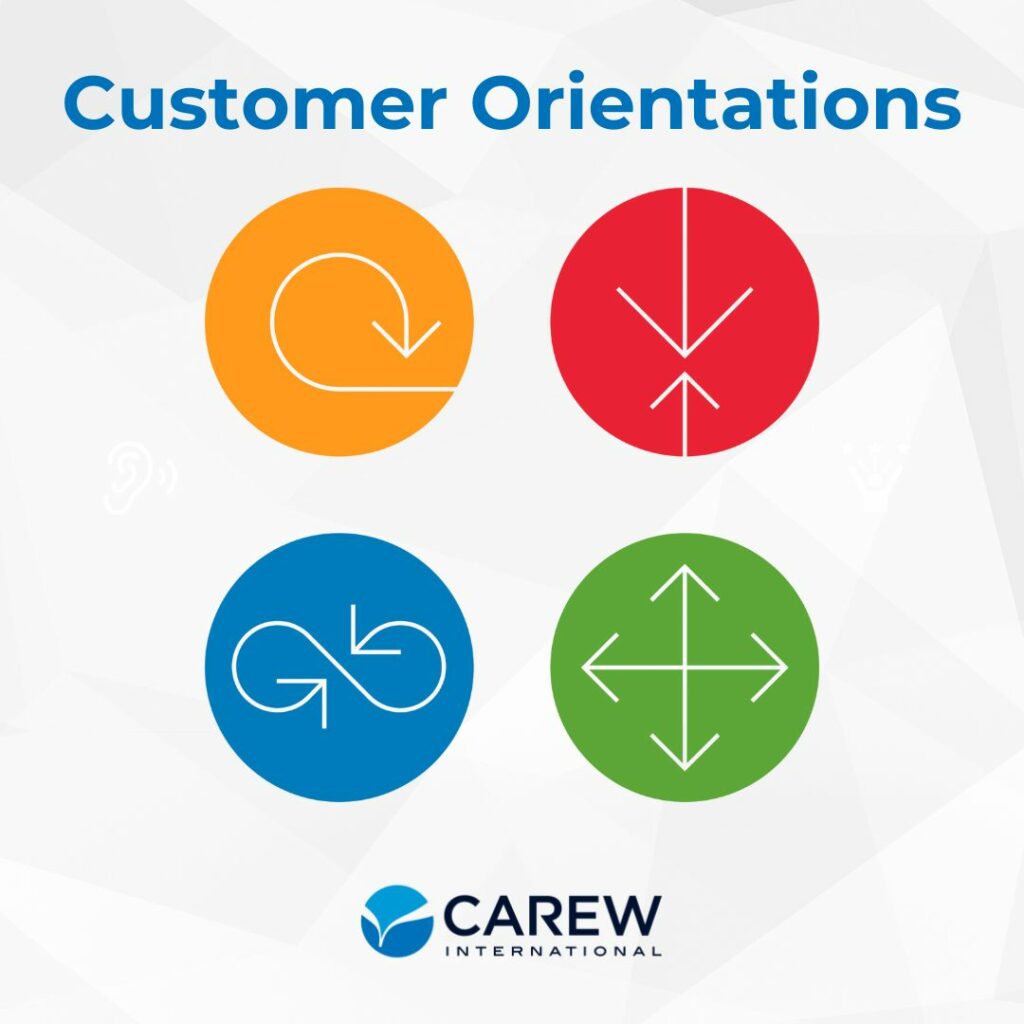
The JADIK Matrix gives you a clear picture of where the client relationship stands, but what about how to communicate once you’re in the room?
That’s where Customer Orientations come in.
At Carew, we teach that every buyer filters information differently. The more aligned your approach is to their orientation, the stronger your message lands, and the faster you build trust and a long-term partnership.
Here’s a breakdown of the four Customer Orientations we cover in training:
Security
Security-oriented customers typically try to avoid risk. They are precise and detailed, and like to keep track of everything via organized files and documentation.
What they need to hear: “Here’s everything you need to feel confident in the details—and how we’ll keep things on track, step-by-step.”
Affiliation
Affiliation-oriented customers are “people people.” They value the relationships they have with others, enjoy entertainment, and do their best to avoid conflict.
What they need to hear: “We’re in this together, and we’ll keep everyone in the loop so it’s a smooth, positive experience for your team.”
Power
Power-oriented customers are authoritative people who often focus on themselves and their own accomplishments. They like to have control over situations and always work in the name of getting things done.
What they need to hear: “This puts you in control and positions your team to win.” or “I’d love to set up a meeting with our CEO.”
Actualization
Actualizers are a blend of the other three orientations. They are always in it for the betterment of their organization. They share credit and demand excellence from themselves and others.
What they need to hear: “This is built for long-term success—measurable, sustainable, and aligned with what matters most to your organization.”
When you combine the JADIK Matrix with Customer Orientations, you gain two advantages:
- Clarity on where you stand
- Confidence in how to move forward
That’s how you deepen relationships, and that’s how to develop long-term customer relationships in sales that actually stick.
Put This Into Practice
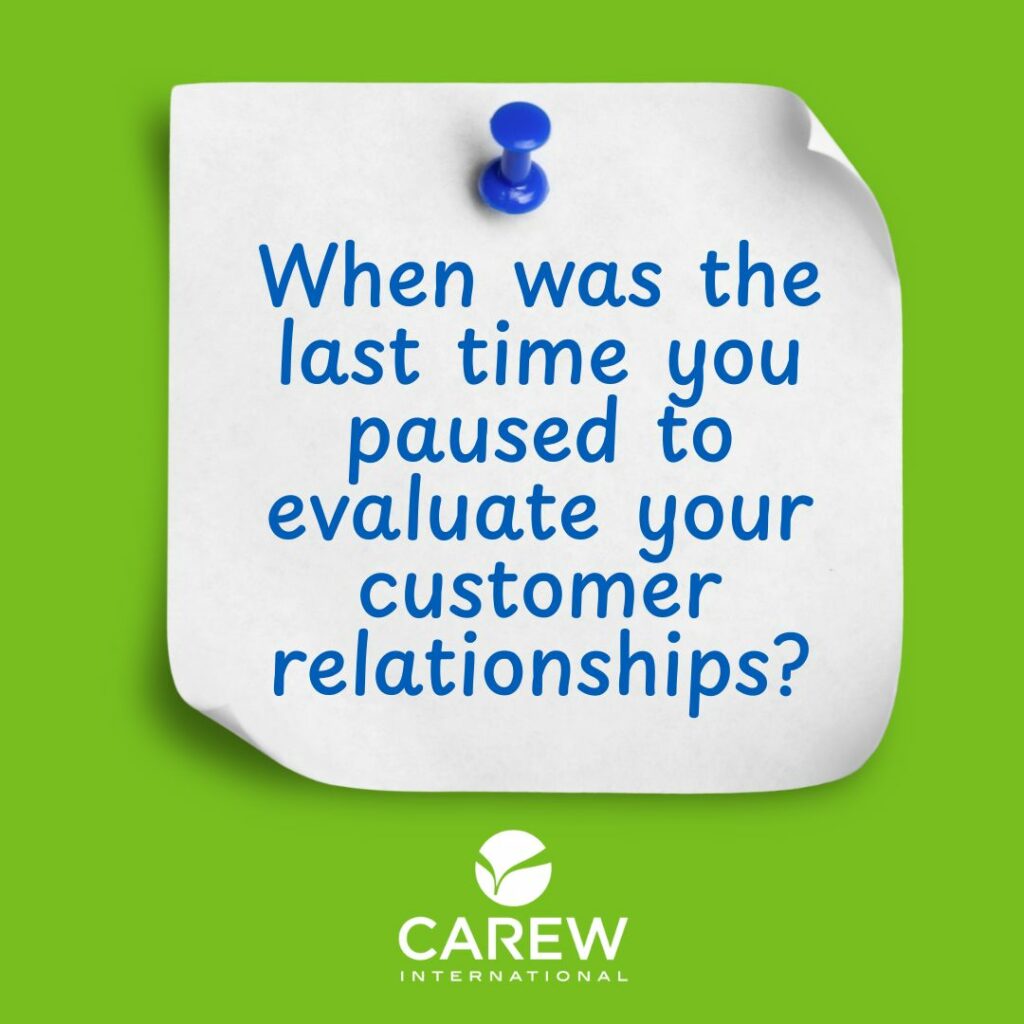
When was the last time you paused the sales process to really evaluate your current customer relationships? Not just what you’re selling, but what stage they’re in, what’s working, and what might be holding them back? Continuous improvement is the goal here.
Here’s what this looks like in the field:
Before the meeting: Are you following best practices and doing the research to build Common Ground early?
During the conversation: Are you creating space for real discovery, or rushing to pitch? Are there specific needs that you’re able to identify? This is where active listening and LAER becomes critical.
After the call: Can you identify a shift in the Matrix, more Common Ground, less Blind Spot?
This is how great reps become trusted partners. And how customers stop seeing you as a vendor and start seeing you as a guide.
